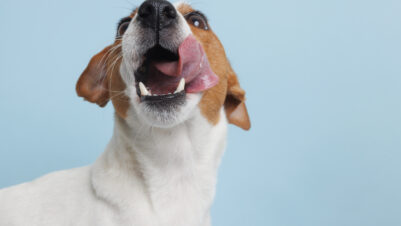Imagine this scenario: an owner has presented a two-year-old female Labrador for a routine open ovariohysterectomy. The owner is concerned about the wound post-surgery; their previous dog was distressed by her spay wound, which still looked red and swollen two weeks after surgery. They would like to know if anything can be done to speed up the healing. You have recently seen therapeutic veterinary lasers advocated for improved wound healing. You want to know if low-level laser therapy will improve wound healing in dogs and therefore be a worthwhile investment for your practice.
The evidence
Five papers were critically appraised: one case study and four randomised controlled studies. In one of the randomised control studies, no distinct differences were reported between the laser therapy and non-laser therapy groups on qualitative appearance (deBraekt et al., 1991). There were no significant differences in wound surface area and rate of wound healing between both groups, with all wounds fully healed within four weeks of the surgical procedure.
A further study used dogs as their own control, with wounds created bilaterally on each dog (Kurach et al., 2015). There was no statistical significance between the laser-treated and control wounds in all parameters measured, including mean total wound area, mean percentage of wound contraction and epithelialisation, and mean histologic acute inflammation scores. All wounds were healed by the end of the study, with no apparent beneficial effects of low-level laser therapy at the specified laser settings and technique.
In another study, dogs had a bilateral flank ovariectomy performed (Gammel et al., 2018). On each flank, a standardised dorsal ventral incision was performed, which was then sutured, as well as a punch biopsy, which was left open. Each flank was randomly assigned to either a control group with no laser therapy or a treatment group with laser therapy. Both a blinded qualitative assessment of wound photographs and quantitative assessment of wound measurements indicated no significant difference in healing time, wound area size or histological changes between the laser-treated wounds (incisional and open), compared to the control. However, as both these studies used dogs as their own control, there is a possibility that laser therapy had systemic effects which could have influenced the healing of control wounds.
In the fourth randomised controlled study, 12 dogs received hemilaminectomy surgery and were randomly assigned to a laser treatment group or control group (Wardlaw et al., 2019). Qualitative assessment of wound photographs demonstrated that laser therapy-treated dogs had improved scar scales, with a statistically significant difference by day 21, when compared to control dogs. The authors concluded that laser therapy accelerates wound healing. However, four dogs in the non-laser control group and two in the laser group were on steroids during the study, which is a potentially confounding factor. Additional statistical analysis showed dogs on steroids had a significantly lower scar scale than dogs who were not.
A case report described a single dog with a pre-existing chronic wound, where laser therapy was given once a day for four consecutive days (Lucroy et al., 1999). Wound size was measured each day for 21 days, with wound surface area being analysed from photographs. A reduction in wound surface area was observed on day four, with the wound reportedly completely healed by day 21. The laser therapy appeared to aid the healing of a chronic non-healing wound. However, as this is a case study, this is a low level of evidence with no direct control comparison or statistical analysis.
Conclusion
Overall, there is moderate strength of evidence that low-level laser therapy does not increase the speed of wound contracture or reduce healing time.
Only two studies concluded a positive effect of laser treatment on wounds. One was a case report and investigated a chronic wound rather than acute wounds, making it hard to compare with other studies. The other treated only three dogs with laser therapy, and there was a lack of standardisation of wound or treatment protocol. The other three papers had a good randomised control study design, with objective and subjective assessments of standardised wounds. However, each study had a small number of dogs and investigated different protocols, making it difficult to compare directly.
Further controlled studies are needed, with larger populations of dogs and using laser settings from previous studies, to provide a stronger level of evidence for the effectiveness of low-level laser therapy.
The full Knowledge Summary can be accessed online.











